Cairo – Mother of the Earth
Cairo. Around 20m people. One world’s largest cities and the largest in the Middle East. I’ve been wanting to visit this unique city for its rich history and finally managed to plan a trip. The political situation has been fragile and tourists numbers have dwindled, only to recently pick up slightly.
After arriving from Alexandria by train, I found myself in large and chaotic Ramses Railway Station. I was glad as I only arrived and did not have to depart from this station as navigating it seems to be quite advanced. Even finding an Uber driver outside proved to be a challenge, so for the first time in a while I rode in a regular taxi. And immediately knew why I’d been prefering ride hailing services. Communication proved to be a massive challenge. Secondly agreeing on a price (the meter is just for decoration purposes) was another challenge. Once we arrived, of course the guy asked for more. And of course he did not have change. Dear taxi drivers of the world: you’re just asking to be disrupted with this kind of attitude.
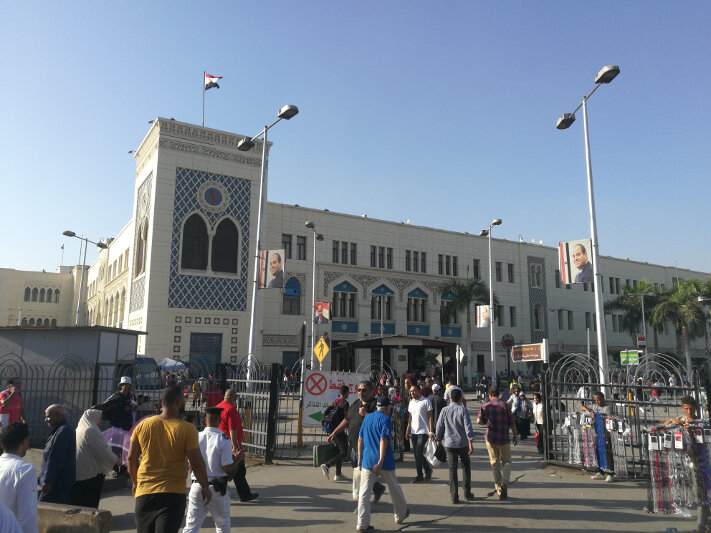
I had decided to stay in downtown Cairo near Tahrir Square, which was convenient as I could walk to lots of places and the metro was also very accessible.
By a recommendation of a friend, I had dinner the first night in Zamalek, an affluent district on the northern tip of Gezira Island which offers beautiful views across the Nile:
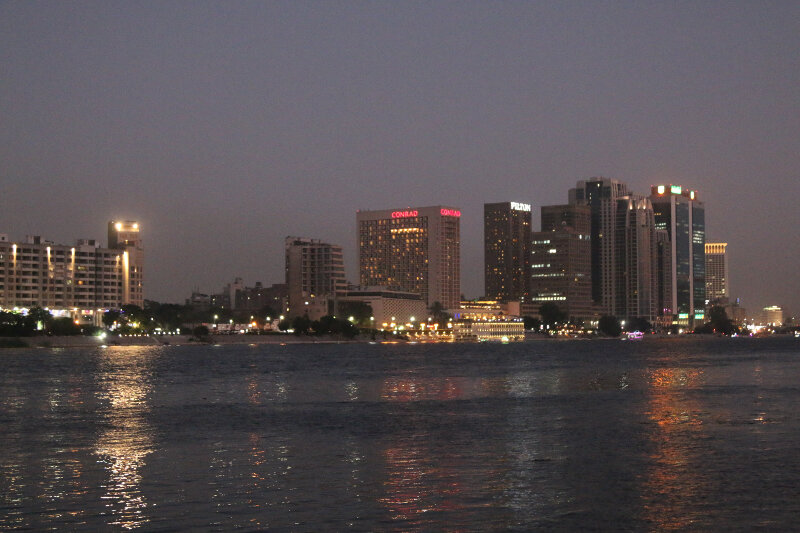
The next day I had my personal highlight on the list: visiting the Giza Necropolis with its pyramids. The three main pyramids are by far the oldest of the Seven Wonders of the Ancient World and the only remaining structure of the seven. They were constructed c. 2580 – c. 2560 BC and reach a height of an incredible 138m. Considering how long ago they were built, it is truly remarkable what humanity was capable of at that point.
I took the subway from Mohamed Naguib to Giza and then a bus towards the pyramids. While I had not really seen any tourists in Cairo up to this point, there were a couple of tour buses at the entrance when I arrived. However the site is so huge, that within a few minutes you are almost by yourself.

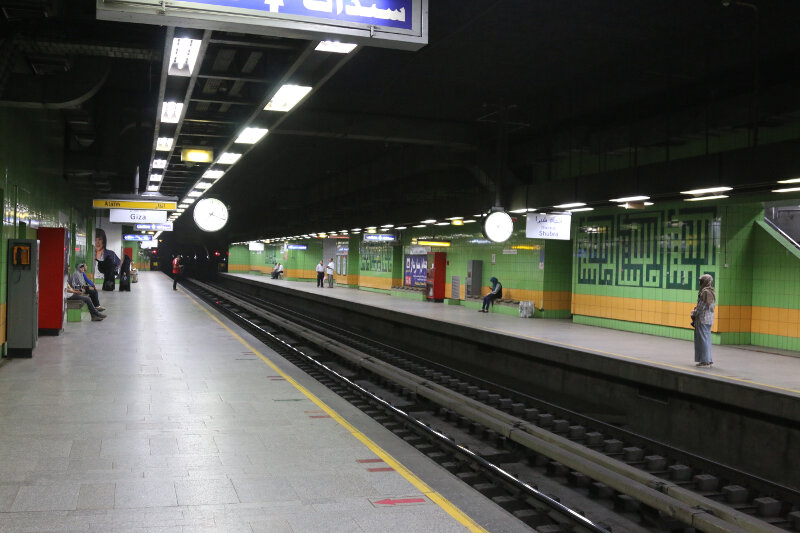
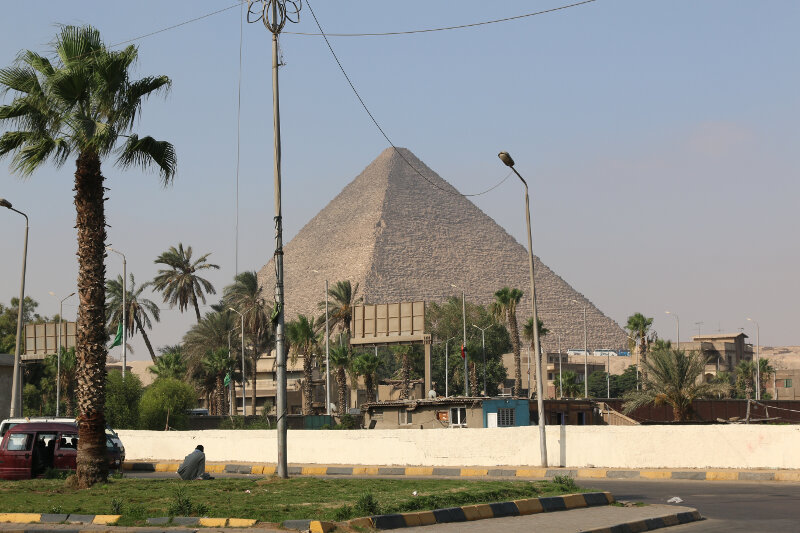
As I had already mentioned in my post about Alexandria, Egyptians don’t seem to place a lot of emphasis on ticket booths. Considering this is probably the main tourist attraction of the country, the sign just looks shabby. Is it that difficult to replace the sign if prices changes? What about spell check?
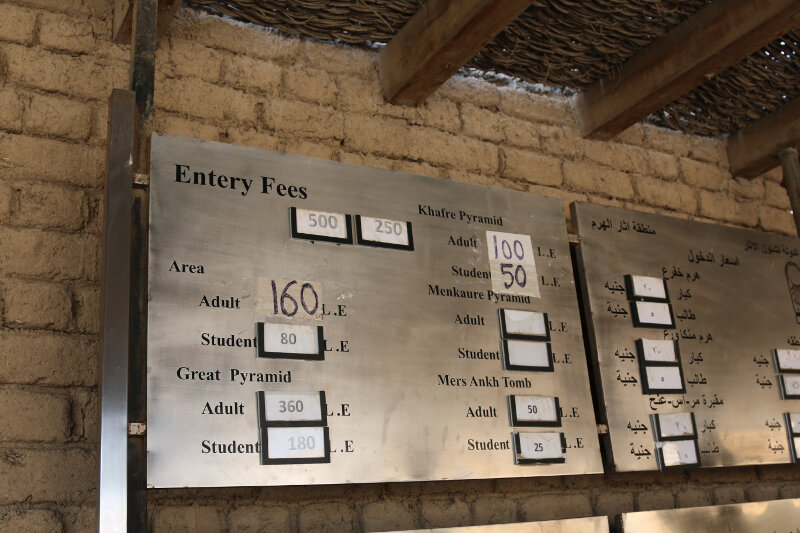
As you enter the gate, it will probably take anywhere between 5 and 30 seconds for the first camel guy to jump at you. There are enough reports online how well these animals are treated and I leave it up to you to do your own due diligence to judge whether you’d be a doing these animals a favor riding them. I kindly declined the offer.
Within a few steps you’ll find yourself at the base of Great Pyramid of Giza, the oldest and largest of the three. It used to be covered in limestone casing stones that formed a smooth outer surface, however that has been removed over the centuries (apparently to build palaces and mosques).
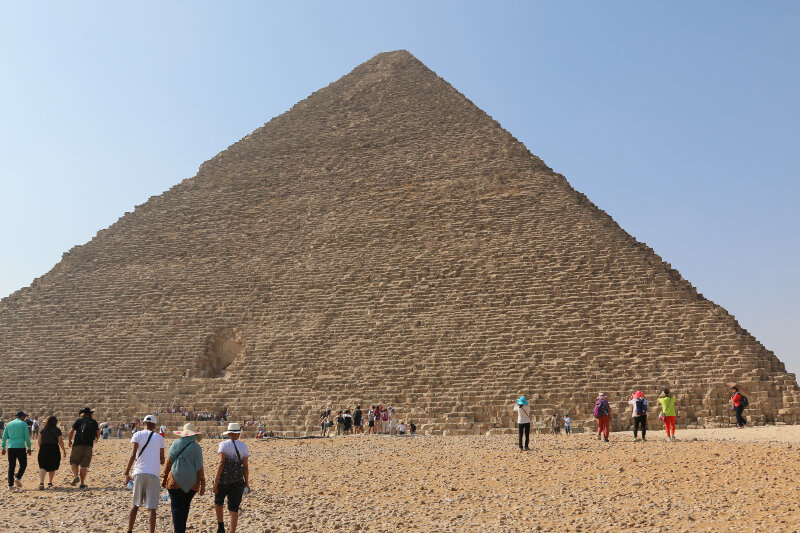
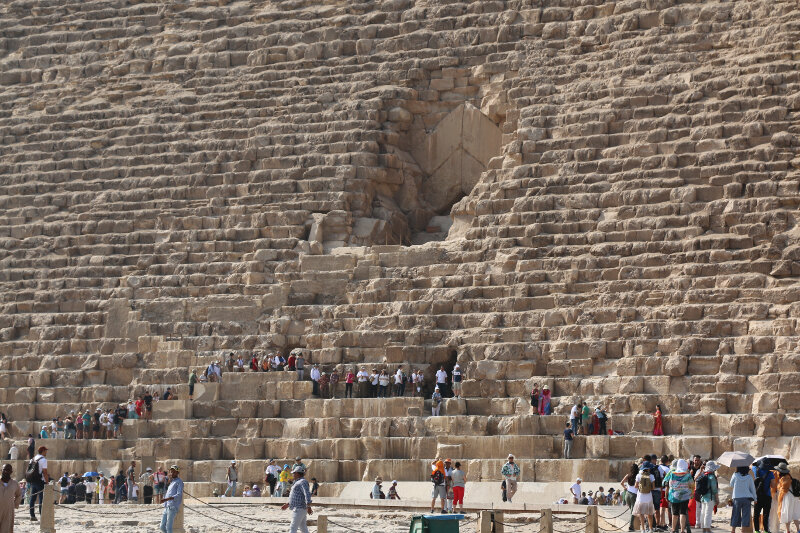
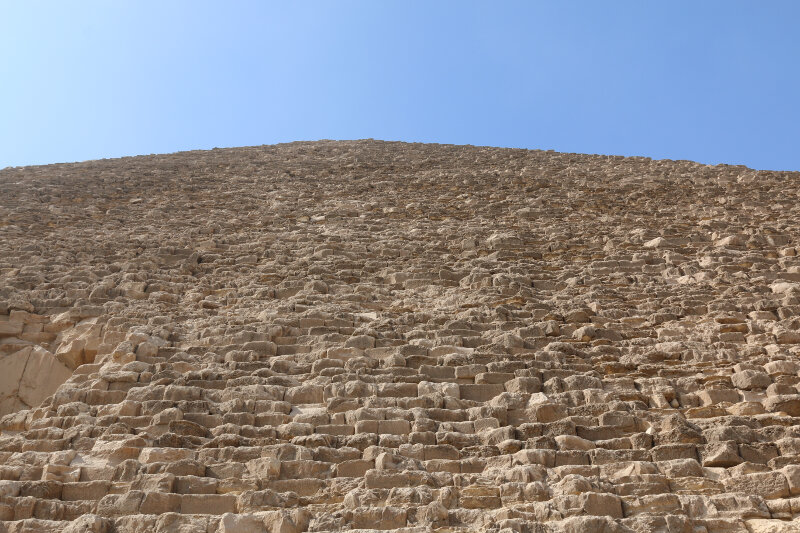
Right behind the Great Pyramid is the Pyramid of Khafre which also includes the Great Sphinx of Giza which is known around the world. Here you can still see the original limestone that used to cover the entire pyramid:
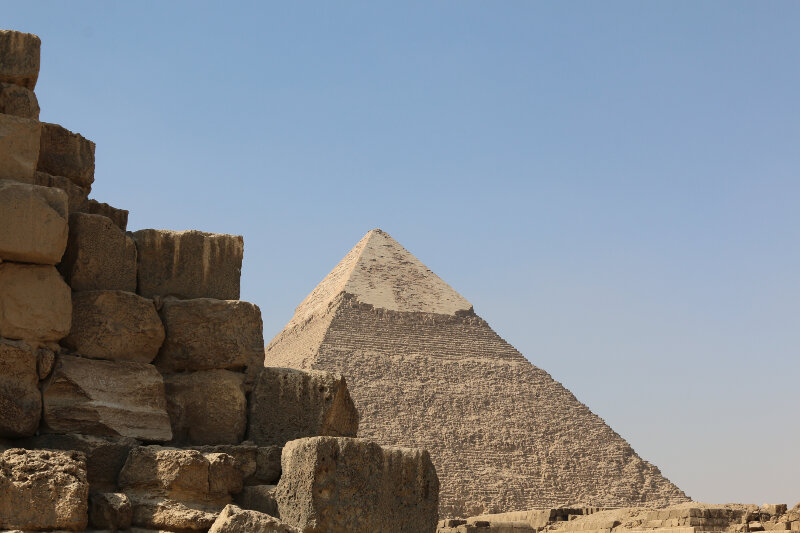
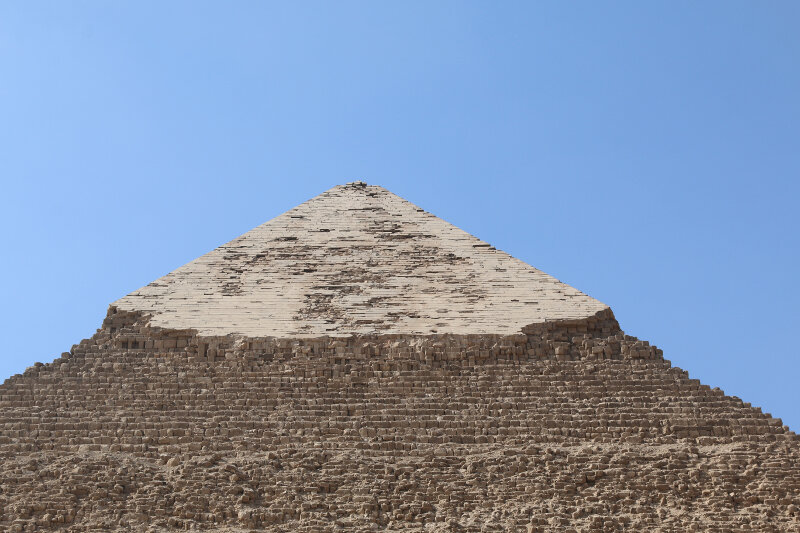
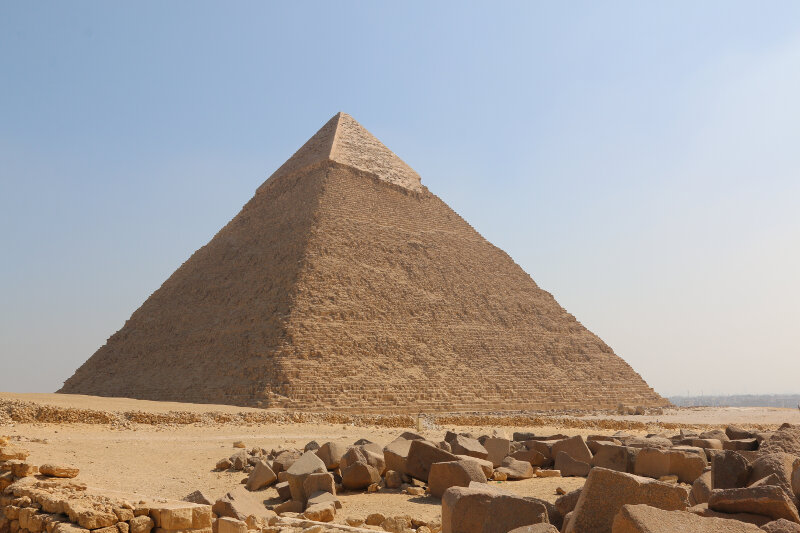
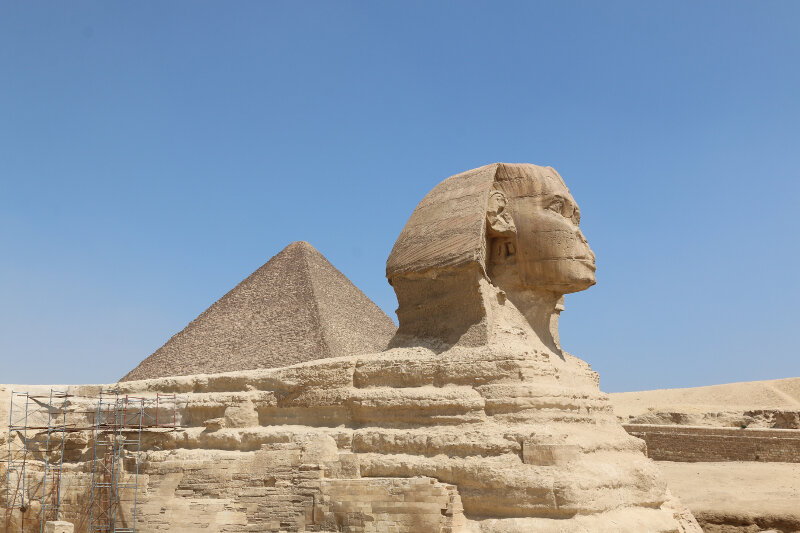
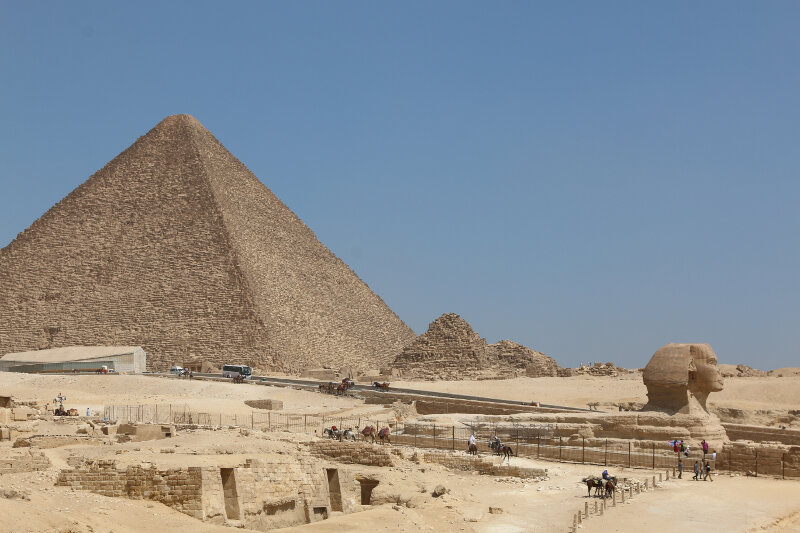
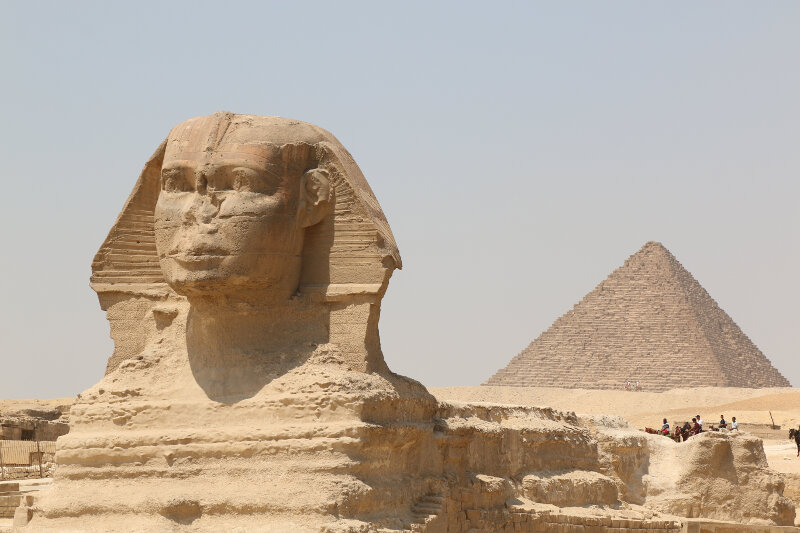
Further behind the Pyramid of Khafre is the third and “smallest” of the trio: the Pyramid of Menkaure.
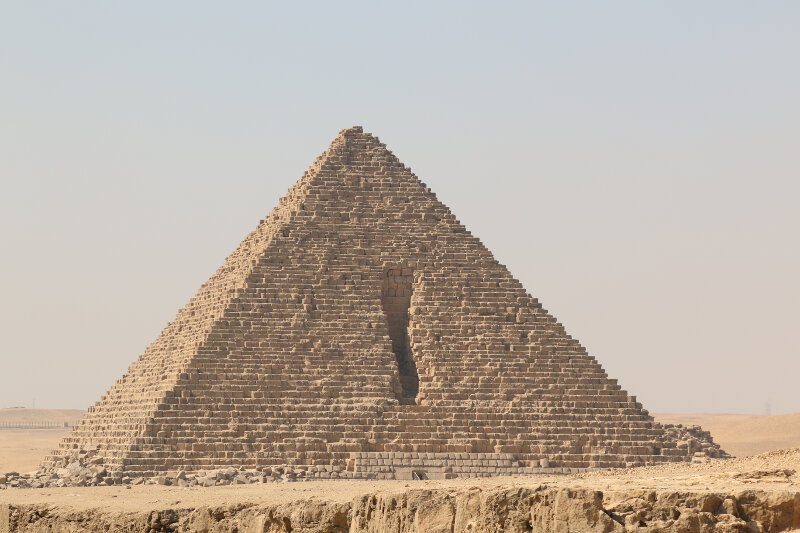
The vertical gash in the pyramid is due to a 12th century Sultan who decided it would be a good idea to demolish the pyramid. Luckily it proved so expensive that he gave up after eight months.
If you venture further out into the desert, you get a beautiful panorama of the entire Giza pyramid complex. It was around a 20-30mins walk. Of course, a bit less strenuous if going by camel but again you have to decide for yourself whether that is worth it or not.
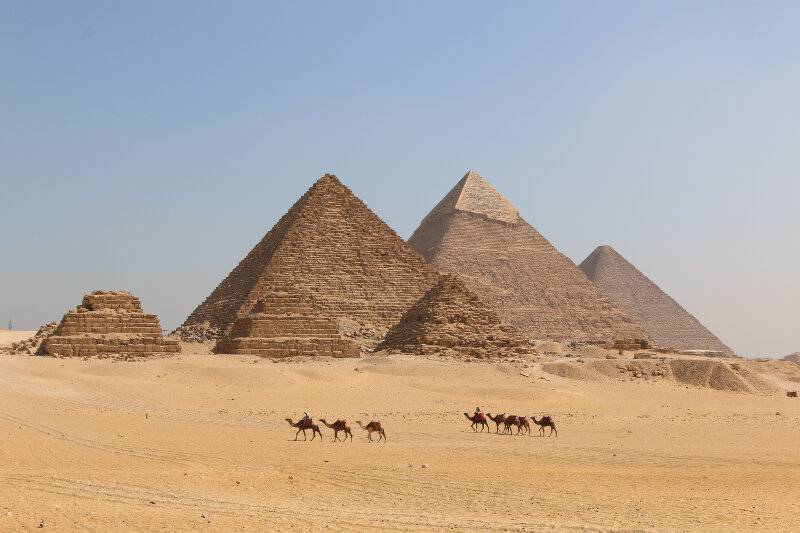
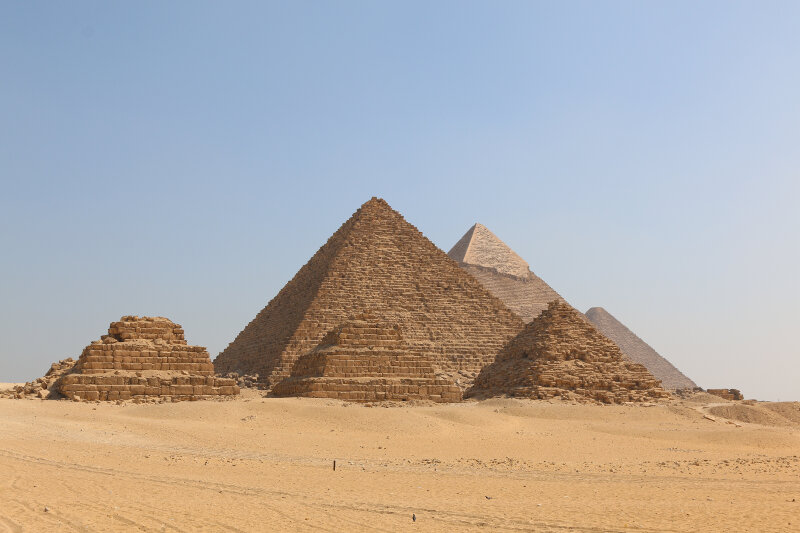
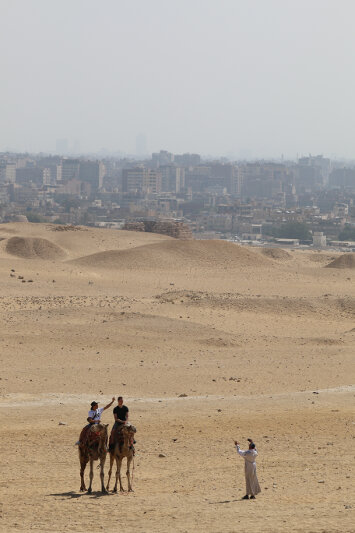
Next to the Great Pyramid there is also a museum showing an original Khufu ship that was buried for the Pharao to take along into his next life.
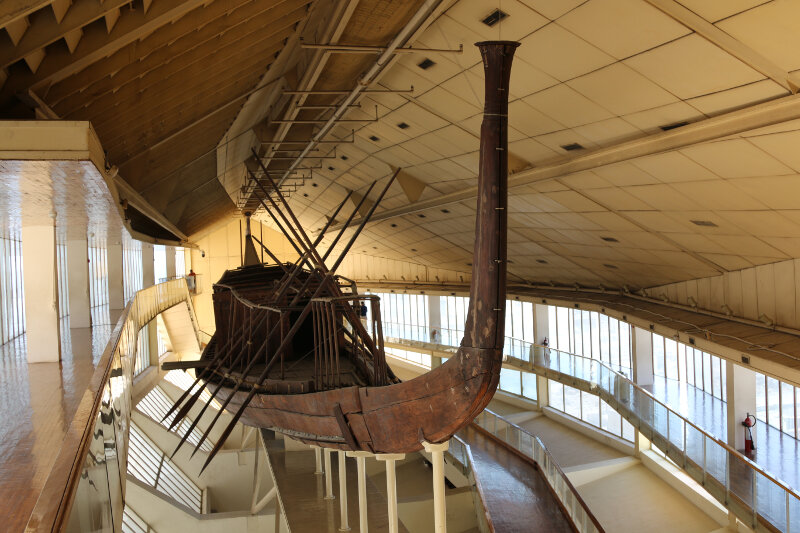
After walking around the pyramids under the burning sun for nearly three hours I was exhausted. By the way, there are a few hotels right next to the complex, which might be a good option if you intend to take a break in between visits.
I continued in search for lunch in the adjacent neighborhood. Unfortunately street food doesn’t seem to be much a thing like in other cities. I finally found a falafel place after passing a few markets in Giza.
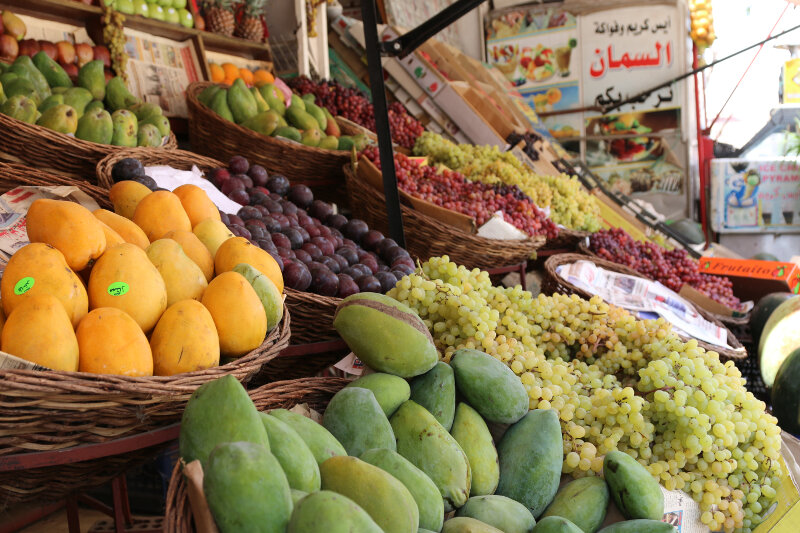
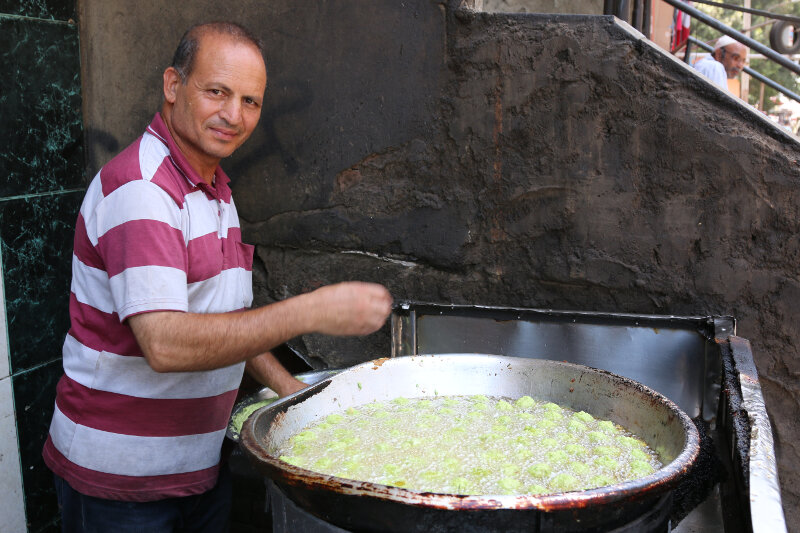
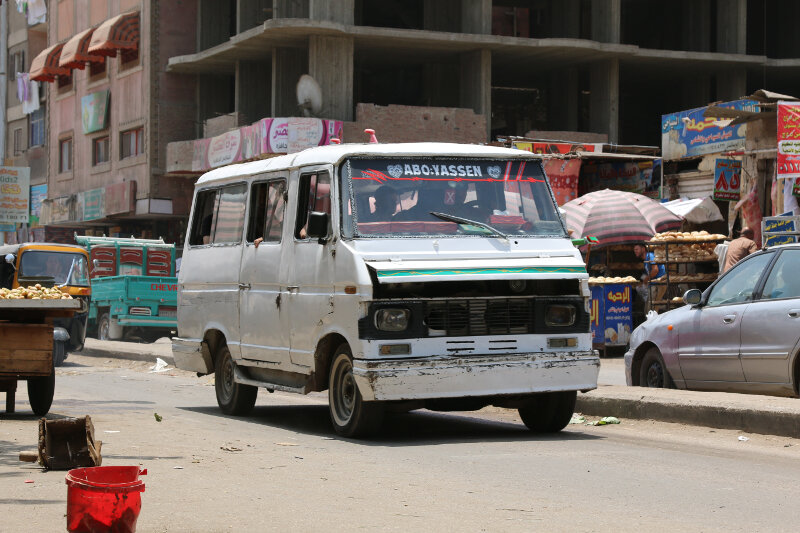
It was then time to leave Giza and head back to the downtown area. While not that far, it still took the Uber driver close to an hour thanks to the maddening Cairo traffic. I was dropped close to the Museum of Islamic Art, a welcome change to the outside 38 degrees.
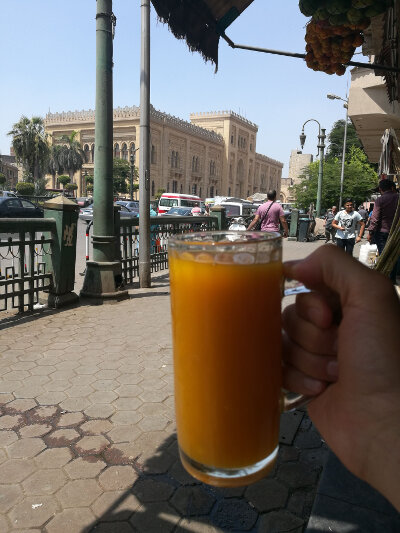
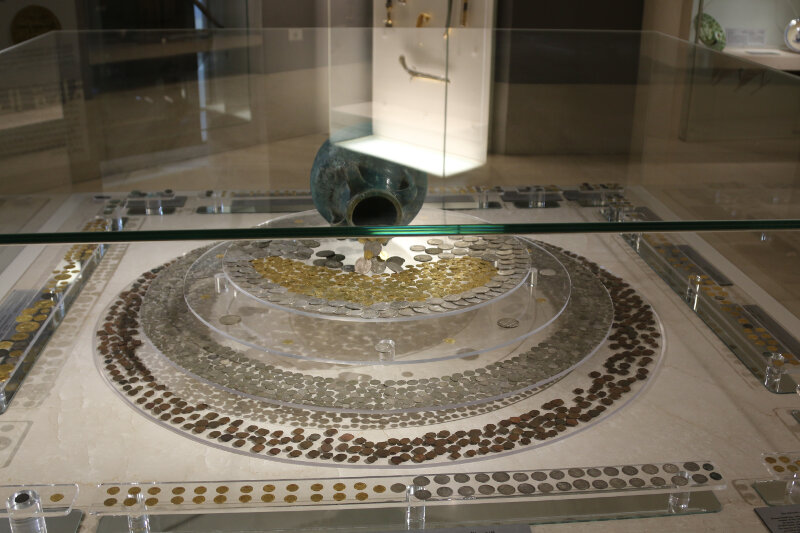
Close to the museum is the start of “old” Cairo, an part of the city with lots of narrow alleys to get lost in. And no tourists to be seen.
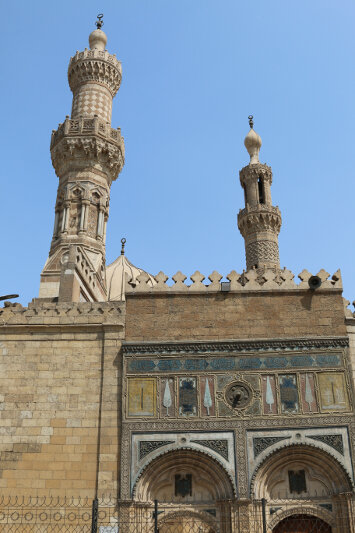
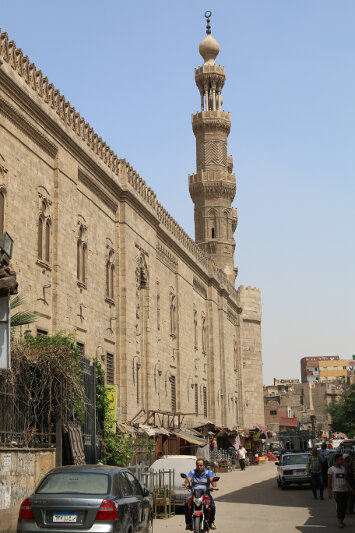
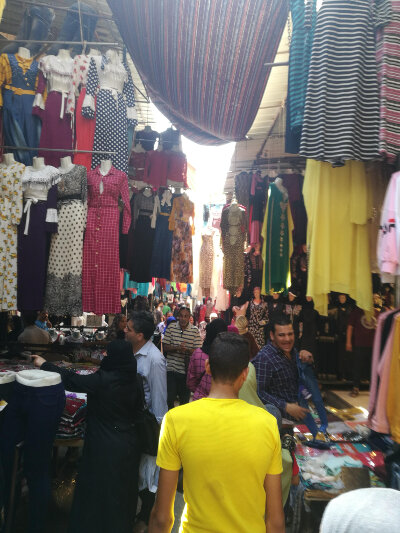
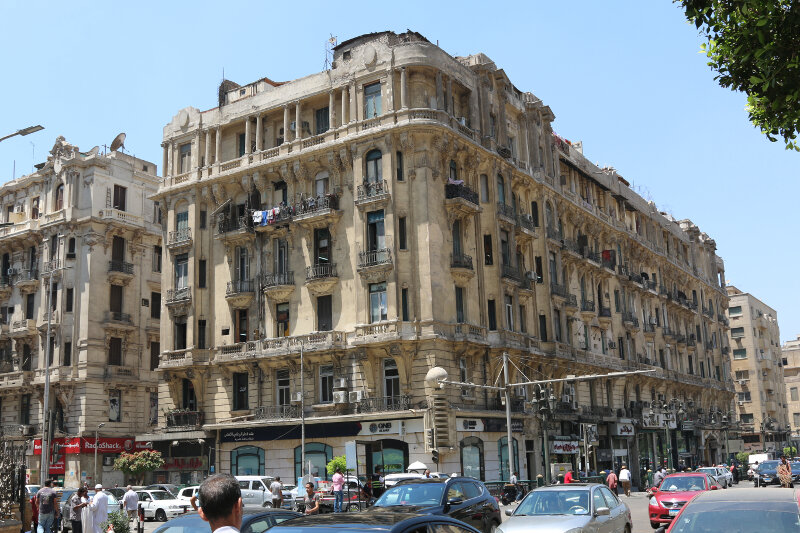
After wandering around through the alleys for a while, the heat got really exhausting and I retreated back to the hotel for a couple of hours to recharge. While the hotel offered great views over the Nile, the constant noise (Egyptians love to use the horn) can get irritating.
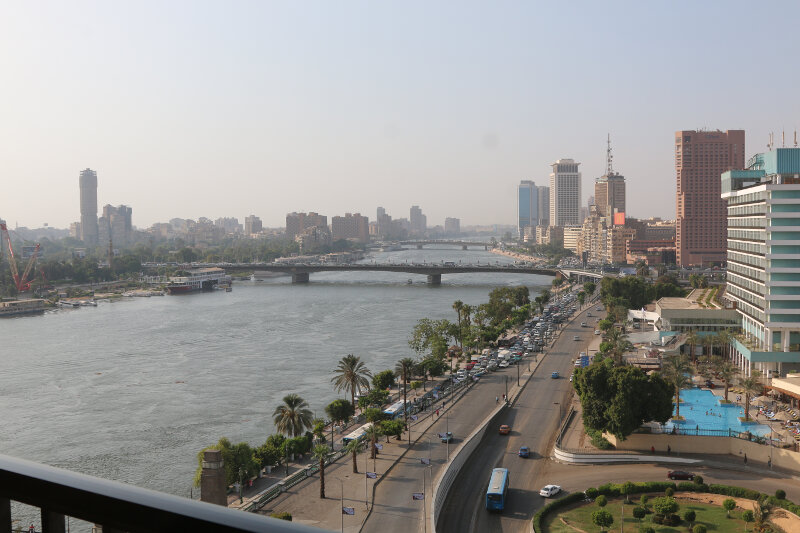
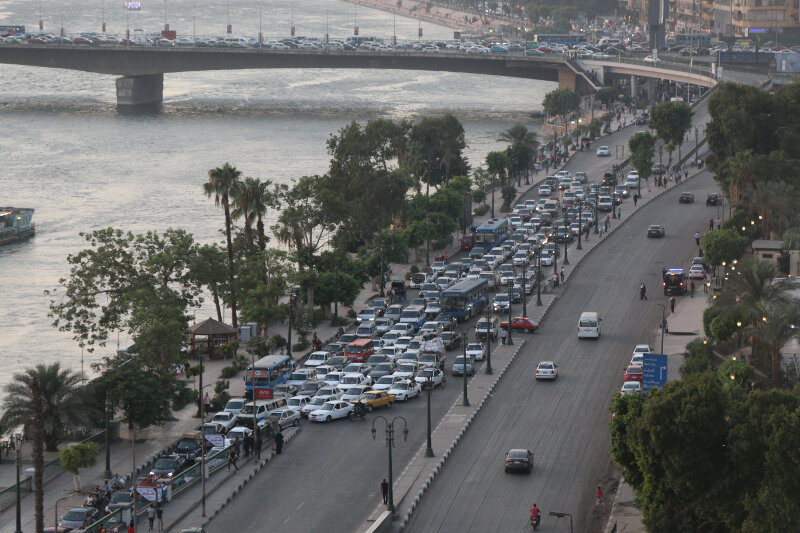
That evening I had dinner at Estoril, an old Cairo institution.
<iframe src="https://www.google.com/maps/embed?pb=!1m14!1m8!1m3!1d13814.62218927813!2d31.2378377!3d30.0467384!3m2!1i1024!2i768!4f13.1!3m3!1m2!1s0x0%3A0x9edfbe8fa4577643!2sEstoril!5e0!3m2!1sen!2sch!4v1566022986694!5m2!1sen!2sch" width="400" height="300" frameborder="0" style="border:0" allowfullscreen></iframe>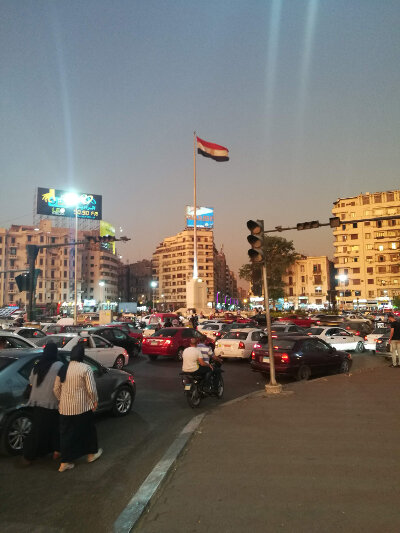
On my last day I had reserved the morning to visit The Museum of Egyptian Antiquities, one of Egypt’s most visited tourist attractions. Built in 1901, it owns over 120’000 artifacts from throughout Egypt’s history, a sizable portion from ancient Egypt. The most prized and well known possession is probably the Gold Mask of Tutankhamun along with the treasures found in his burial chamber.
The museum is one of those places you should splurge on a guide. Signage is poor, so unless you have a really, really good guide book, you’d miss out on a lot. Guides will find you near the ticket booth and when I visited the official rate (at least that is what I was told) was 300 EGP (16 EUR) per hour. I started with one hour and ended up extended to 2.5 hours. I was surprised how crowded the museum was. Lots of tour groups from Southern Europe (especially Italy) as well as Russians.
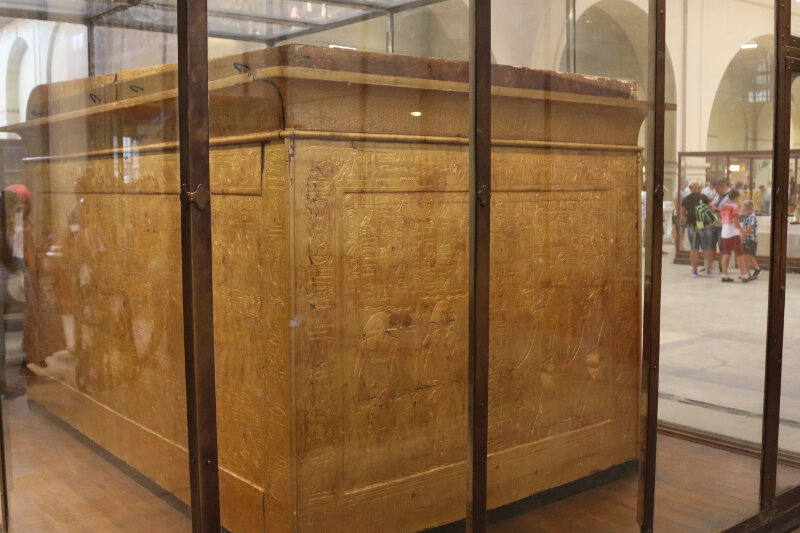
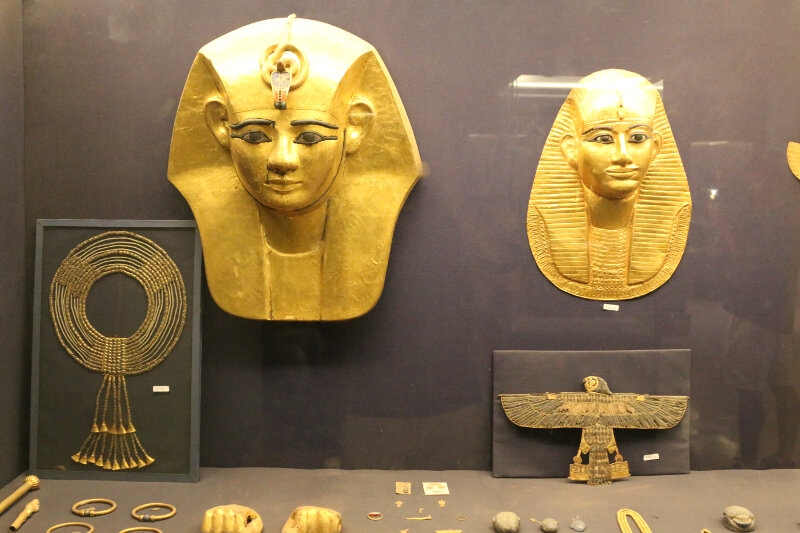
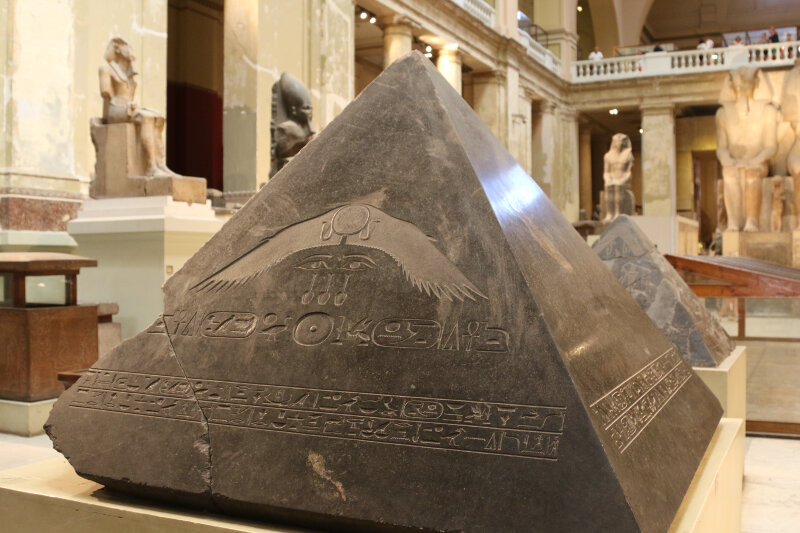
The above photo shows the Pyramidion of the Pyramid of Amenemhet III. Pyramidions are the top part of a pyramid and apparently known around 5 of the over 100 pyramids in Egypt have known whereabouts. They tended to be covered in gold to reflect the sunrays.
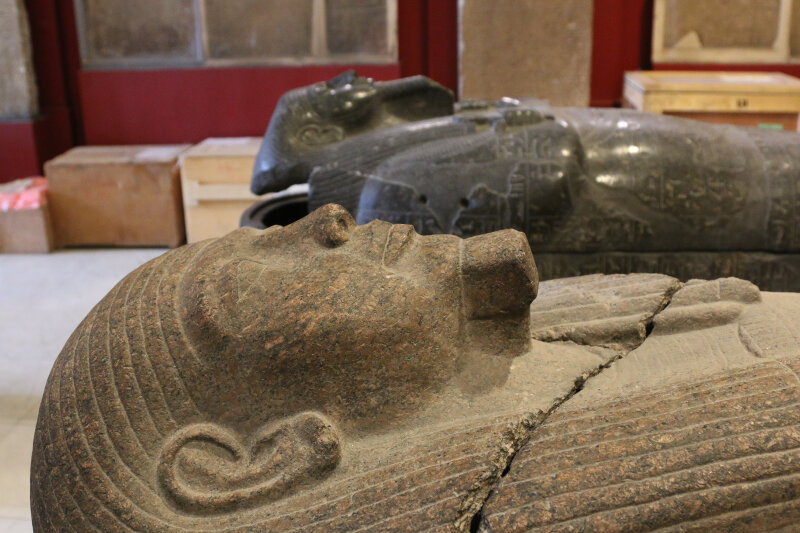
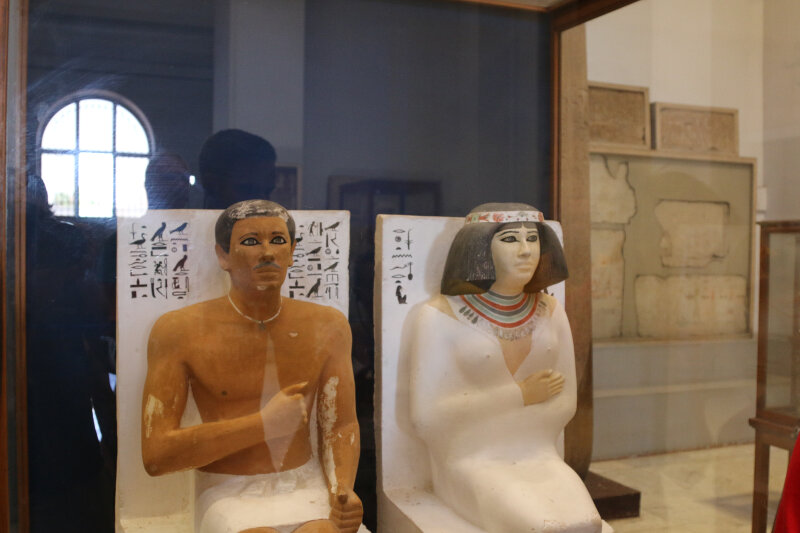
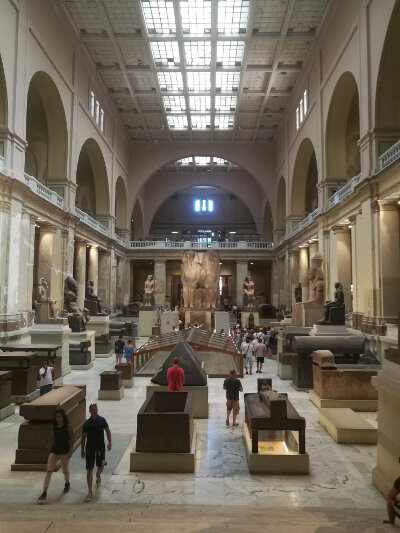
It is a lot of history to absorb but totally fascinating. It can be overwhelming though, so if you have the time, considering splitting your visit into two.
After lunch it was almost time to head back to the airport. I had heard lots of stories about how long queues tend to get at the airport so allowed plenty of time. It turned out that my flight was off peak and there were no queues anywhere at all!
I’m not sure whether my expectations for Cairo were met. On one hand, the history of Ancient Egypt is nothing short of breathtaking and I hope to return one day and see the other wonders of that era. On the other hand, modern Cairo is very energy consuming. The traffic is some of the worst I have ever seen. Plus I was somewhat disappointed with the lack of food options. Comparing to last year’s visit to Jordan, there were much less street-side options available.

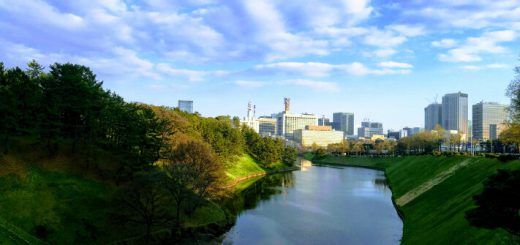

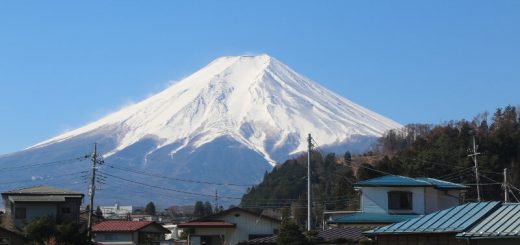
List of Supporting Documents to be Submitted by Applicants for Short Stay Visas in Egypt (Cairo and Alexandria)